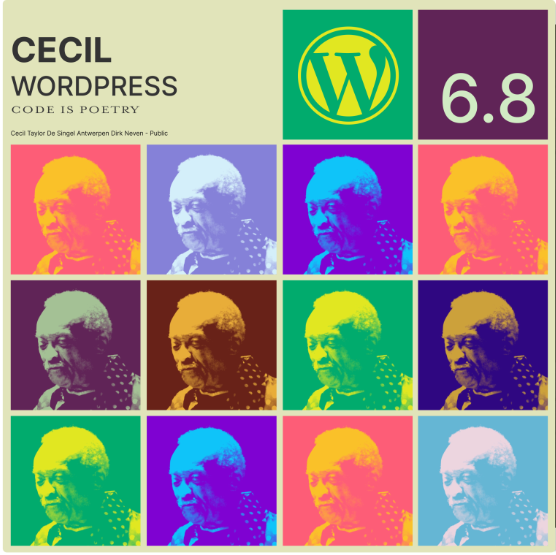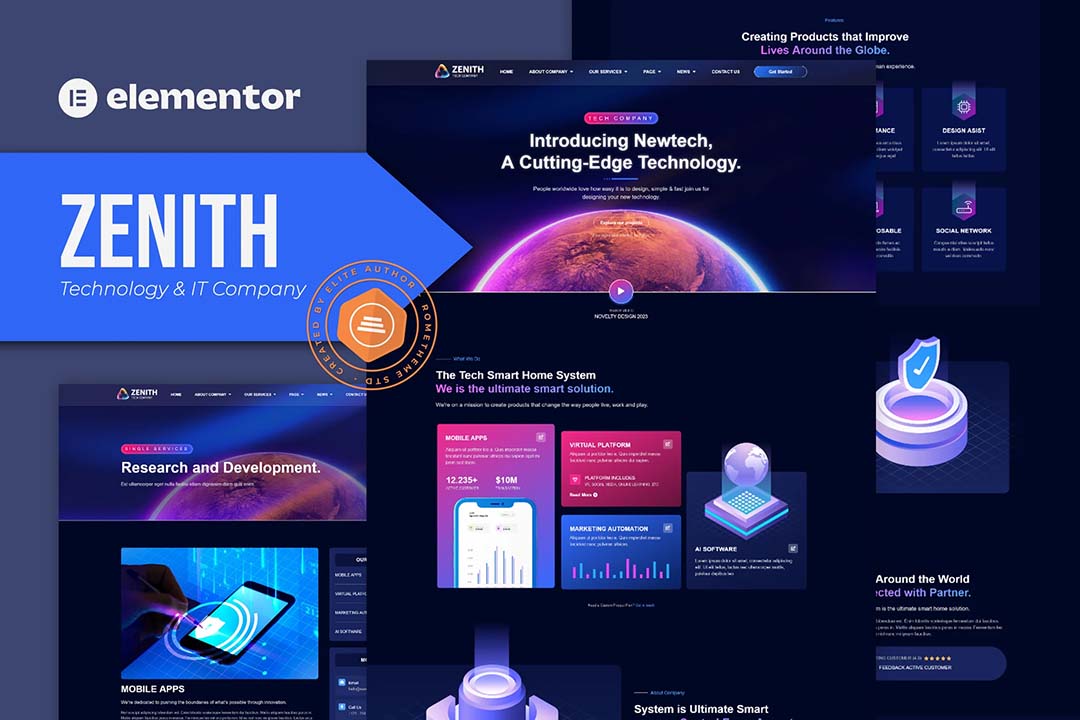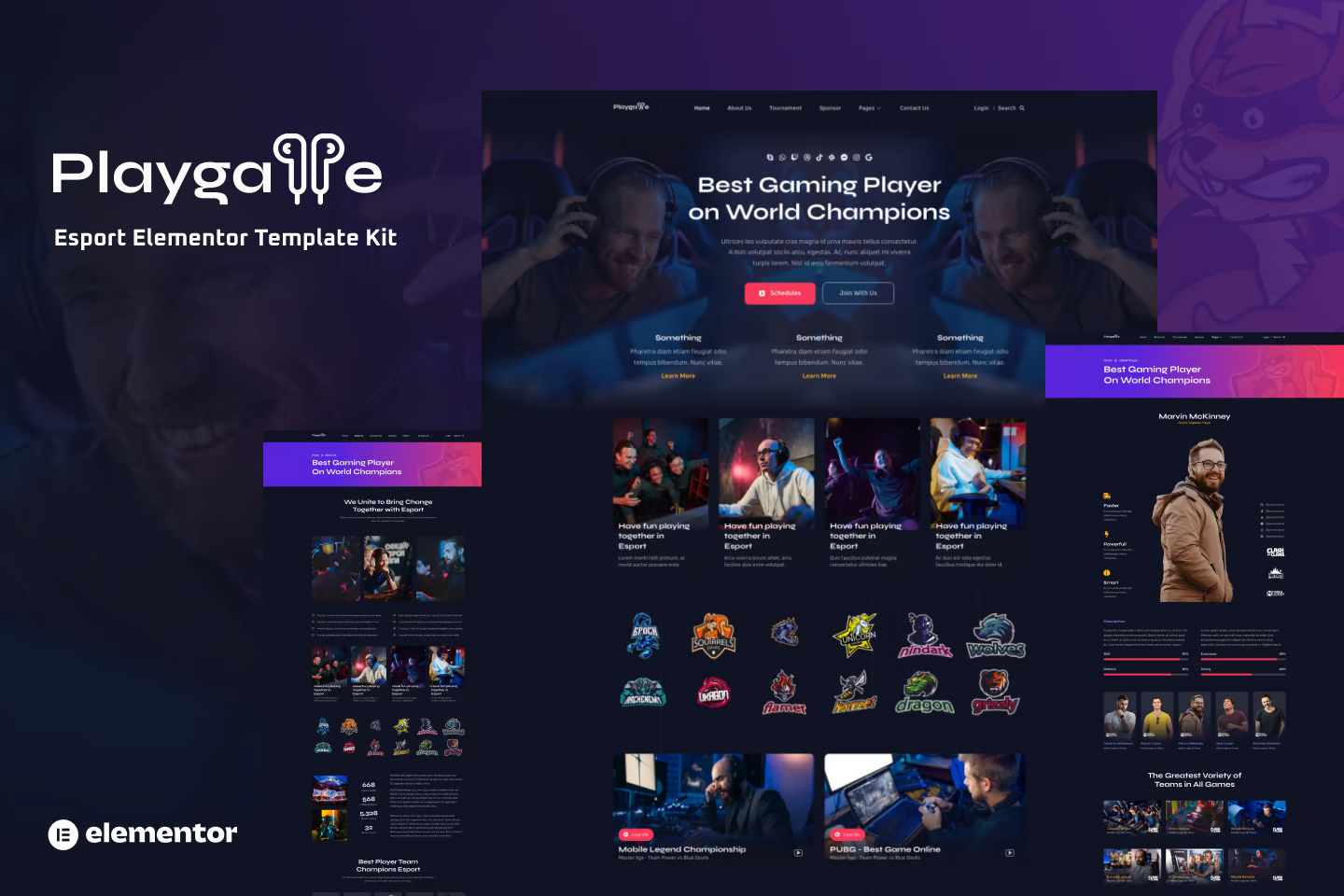WordPress 6.7 Beta 3 (third beta) is now ready for testing!
This beta WordPress software is still under development.. When you download the test, remember to make sure you don'tunder operationmaybeKey SitesIt is recommended to install, run, or test this version of WordPress in the same way as the previous version.Two beta versions(WordPress 6.7 Beta 1respond in singingWordPress 6.7 Beta 2) same, it's best to download WordPress 6.7 Beta 3 to deploy aBlank Site TestingThe
![Image[1]-WordPress 6.7 Beta 3 Testing Guide: New Features, Testing Steps and Key Improvements - Photon Fluctuation Network | Professional WordPress Repair Service, Global Reach, Fast Response](https://www.361sale.com/wp-content/uploads/2024/10/2024101503084118.png)
Still the same, you can test WordPress 6.7 Beta 3 in the following four ways:
| plug-in (software component) | Installation and activation in WordPress installationWordPress Beta Tester plugin. (Select "Bleeding edge" channel and "Beta/RC Only" stream). |
| Direct Download | downloadingBeta 3 version (zip)and install it on your WordPress site. |
| command line (computing) | Use the followingWP-CLICommand:wp core update --version=6.7-beta3 |
| WordPress Playground | utilization6.7 Beta 3 WordPress Playground ExampleTest the software directly in your browser, no separate site or setup required. |
The current target date for the final version of WordPress 6.7 isNovember 12, 2024
How to Test WordPress 6.7 Beta 3
One of the highlights in this release is the new default themeTwenty Twenty-FiveIt givesServices, login pageand other categories offer the flexibility of multiple modes. It focuses on simplicity and adaptability, including beautiful typography and a globally accessible color palette.
![Image[2]-WordPress 6.7 Beta 3 Testing Guide: New Features, Testing Steps and Key Improvements - Photon Fluctuation Network | Professional WordPress Repair Service, Global Reach, Fast Response](https://www.361sale.com/wp-content/uploads/2024/10/2024101502200151.png)
How to test WordPress Beta
There are multiple ways to test WordPress development or beta versions:
Playground
Playgroundis a quick and easy way to test a Beta or Release Candidate of WordPress without having to set up a full environment. You can use theWordPress PlaygroundQuick start test environments.
Local self-hosted websites
It is possible to useLocalmaybewp-envetc. to create a local WordPress website. Once the site is ready, you can install the Beta Tester plugin to switch to the beta version of WordPress.
Setup Steps:
- Download and installthis localityThe
- Create a new WordPress website.
- Once the site is up and running, use the WordPress Beta Tester plugin to switch it to the development or beta version of WordPress. This plugin makes it relatively easy to install pre-release versions of WordPress.
To use this plugin:- Install and activate the WordPress Beta Tester plugin.
- Navigate to Tools > Beta Testing.
- Depending on what you want to test, select the "Bleeding edge" or "Point release nightlies" option.
- Click Save Changes and update the WordPress version.
Via WP-CLI
If you prefer to use command line tools, you can use theWP-CLIQuickly install WordPress Beta.
Steps:
- Create a local WordPress website using your favorite method.
- Once the site is set up, open the terminal and navigate to the root directory of your WordPress installation.
Run the following command to update to the latest test version:
wp core update --version=6.7-beta3wp core update --version=6.7-beta3wp core update --version=6.7-beta3
or
wp core update --version=6.7-RC1wp core update --version=6.7-RC1wp core update --version=6.7-RC1
(Replace the version number as needed, e.g. -version=6.7-beta2.)
This method makes it quick to switch between versions and easier to test specific versions.
Testing with a temporary site
A production/real-time site can be created fortemporary site, and update it to the WordPress beta version. This allows you to safely test the new version without affecting the live site. Before applying the update to the production/live environment, make sure everything is in order.
test patch
If you intend to test the patch, you canFollow these instructionsSetting up the WordPress development version locally.
![Image[3]-WordPress 6.7 Beta 3 Testing Guide: New Features, Testing Steps and Key Improvements - Photon Fluctuation Network | Professional WordPress Repair Service, Global Reach, Fast Response](https://www.361sale.com/wp-content/uploads/2024/10/2024101503112744.png)
List of routine tests
For a quick test of the compatibility of the updated WordPress version with your website, verify the following check:
First, update WordPress to Beta or RC version by enabling in wp-config.phpadjust components during testing, and update themes and plugins.
- Make sure that plugins and themes are not automatically deactivated after updates.
- Check WordPressSite HealthWhether there are any new warnings or problems with the tool.
- Verify that there are no layout breaks or unaligned elements.
- Test links and permalinks to make sure there are no 404 errors.
- Verify that posts, images, and media are displayed correctly.
- Make sure the sitemap and robots.txt files are working properly.
- Ensure that you have full access to the management dashboard and that there are no errors.
- If the site has custom blocks, create content in new blocks and edit existing content.
- Create a new post: add content, copy and paste text and add media files manually. Save the post and watch the console for any issues.
- Create a new page, add content, and check how it displays in different browsers.
- Open your browser's developer console and check for any errors, warnings or notifications.
- Open the error log file and check for notifications, warnings and fatal errors.
- Review user roles and permissions to ensure they remain intact.
- Verify that any scheduled posts or automated tasks, such as backups, are still running as expected.
- Ensure that all integration services, such as payment gateways or analytics, are functioning properly.
- Open the site in different browsers and verify that all features work as expected.
Key features to test
New default theme - Twenty Twenty-Five
In WordPress 6.7, the Twenty Twenty-Five theme achieves the perfect balance of simplicity and flexibility. Inspired by nature and history, the theme offers a wide variety of patterns and templates to accommodate use cases ranging from personal blogs to complex portfolios. It includes a rich color palette and a variety of blog templates to make it suitable for a global audience, for more details about this new theme, thePlease read the introductory articleThe
paradigm
The Twenty Twenty-Five theme introduces a variety of pre-built patterns to help users create pages efficiently. These patterns cover a variety of categories, such as services, about pages, call-to-action phrases, and more. They are designed to provide flexibility and interoperability, allowing users to quickly build purposeful and cohesive page layouts.
Test Steps:
- Navigate to Appearance > Editor to open the Site Editor.
- Open any template or create a new page.
- Click the "+" icon to add a new block.
- Go to the Patterns tab in the Block Inserter.
- Select patterns from different categories (e.g., Service, About, Call to Action, or Gallery).
- Insert the patterns and check that they are displayed correctly.
- Test the interoperability of these patterns by combining multiple patterns on a single page.
- Adapt and customize modes as needed and make sure they respond on different devices.
- Make sure the layout in the site editor matches the layout on the front end.
Color palettes and styles
The theme offers a variety of color schemes and style variations, allowing users to easily customize the appearance of their website. The theme includes a variety of color schemes and typographic pairings designed for global use, ensuring high-quality support for a wide range of languages and regions. These options give users the flexibility to match the aesthetics of their website to their unique style while maintaining a uniform and visually appealing appearance.
Test Steps:
- Navigate to Appearance > Editor to open the Site Editor.
- Click the upper right corner of theStyle buttons(half-moon icon).
- Choose different color palettes and font pairings to apply to your website.
- Observe how colors and fonts change throughout the site when a new color palette or style is selected.
- Save the changes and preview the site on the front end to confirm that the new styles have been applied correctly to all pages.
templates
Twenty Twenty-Five offers a range of adaptable blog templates, including text-centered blogs with sidebars and visually-driven photo blogs. It is fully integrated with the site editor and utilizes new design features such as grid blocks and pattern/section styles.
Alternative Template Design
The theme includes four sets of alternative designs: a plain text blog, a photo blog, a news blog and a blog with vertical headers. The designs are built as patterns for replacing template content.
To test the photo blog design, follow these steps:
- Go to Appearance > Editor.
- Select the menu option template.
- Choose the template you want to test, such as a single post, page, archive, or blog homepage.
- In the editor, open the Settings sidebar.
- Select the Templates tab.
- In the Templates tab, locate and expand the Design panel.
- The Design panel displays a preview of the available designs:
- Hover over the preview to see the design name.
- Click Preview to replace the contents of the template with the selected design.
- Make sure the layout in the site editor matches the layout on the front end
Partial Style
The Twenty Twenty-Five theme introduces four unique section styles that are primarily used to change the colors of groups and columns. These styles provide the flexibility to create visually appealing layouts. Testing consisted of ensuring that the new styles were applied correctly in both the editor and the front-end, with a focus on usability and readability.
Test Steps:
- Create a new post or page in the dashboard.
- Inserts a group block or column block.
- Within a group or column block, add some blocks such as headings, paragraphs, etc.
- Open the Settings sidebar and select the Blocking tab.
- Open the Styles tab and find the Styles panel at the top.
- Select one of the alternative styles. Repeat for each style to test all styles.
- Make sure the editor and front-end designs look the same.
- Verify that color combinations are readable, including backgrounds, text, links, and buttons.
Improving the data view
Ability to set the density of information in the grid layout
In WordPress 6.7, users can adjust the density of the grid layout to provide a more customizable and responsive viewing experience. This update introduces new UI controls in the grid view that allow users to choose their preferred density.
![Image[4]-WordPress 6.7 Beta 3 Testing Guide: New Features, Testing Steps and Key Improvements - Photon Fluctuation Network | Professional WordPress Repair Service, Global Coverage, Fast Response](https://www.361sale.com/wp-content/uploads/2024/10/2024101502433261.png)
Test Description:
- Open from DashboardSite EditorThe
- Navigate to "paradigm"Part.
- Click the Settings icon to open the Appearance and Settings panel.
- From "Preview size"Adjust Mesh Density Options.
- Observe how the pattern is displayed.
Options to hide/show filters in the UI
![Image[5]-WordPress 6.7 Beta 3 Testing Guide: New Features, Testing Steps and Key Improvements - Photon Fluctuation Network | Professional WordPress Repair Service, Global Reach, Fast Response](https://www.361sale.com/wp-content/uploads/2024/10/2024101502442512.png)
Ability to customize the order of columns in the table view
WordPress 6.7 introduces the ability to customize the order of columns in the table view, providing more flexibility in how data is displayed. This feature allows users to move table columns to the left or right to create a more customized layout when managing templates, schemas, or pages.
Test Description:
- Open any tabular data view (template, schema or page) in WordPress.
- Click the column headings to view the available actions.
- Select "Shift Left" or "Shift Right" to rearrange the columns.
- Verify that the columns are adjusted accordingly and maintain the new order when the page is refreshed.
The hierarchical data view option on the menu allows for more design expression
Data view options have been improved for greater design flexibility. Added a new gear icon with a "View Options"Settings. This will open a "exterior condition" pop-up window that allows the user to manage view preferences.
For example, the number of items per page and sorting options.
Examples include: "Sort by", "Sort by", preview size, number of items per page, etc.
Test Description:
- Open any data view (template, schema, or page) in the Site Editor.
- Click the gear icon to display the View Options settings.
- Open the Appearance pop-up window to explore the available options.
- Adjust the number of items per page and the sorting options (e.g. "Sort by" and "Sort by").
- Verify that the settings have been applied and reflected in the data view.
Refinement of the query loop
The Query Loop block is a key component of site building in WordPress and is currently undergoing improvements to improve its usability and intuitiveness. While it's still a powerful and versatile block, these improvements focus on making customization easier. Key changes include better context detection and clearer copies of settings, ensuring that users can easily create and manage complex queries.
Test Description:
- Open the WordPress dashboard and create a new page or post.
- Inserts a query loop block into a page or post.
- Check the settings in the sidebar and note the description.
- Customize the query loop and make sure changes are intuitive and easy to apply.
- Save your changes and check the accuracy of the front-end output.
Zoom in to compose using a pattern
WordPress 6.7 introduces a new "Zoom Out" feature to enhance the way users interact with patterns when building and editing websites. This feature provides an advanced editing view that allows users to focus on the pattern rather than making fine adjustments block by block. Key aspects include a reduced interface for inserting motifs, creating new pages focused on motifs, and managing them (moving, deleting, etc.) via vertical toolbars. Users can switch between narrowing and detailed block editing, enhancing the overall user experience with improved pattern manipulation and advanced content-only editing.
pattern sth.
Test Description:
- Navigate to the site editor and insert the schema into the page or post.
- Use the Zoom Out button to switch to the zoomed out view.
- Verify that the overall structure of the page is visible so that the schema can be manipulated more easily.
- In the reduced view, try moving, deleting and rearranging patterns using the new vertical toolbar.
- Ensure that the pattern responds accurately to drag-and-drop operations and is placed correctly without accidental movement.
- Check that the zoom option is working as expected by zooming in to see detailed block editing and zooming out to see a broader view of the page.
- Observe any UX issues or inconsistencies when interacting with the pattern in reduced mode.
- Exit shrink mode and make sure that all changes remain intact and are displayed correctly in the standard block editor.
Explore the Shrinking Style Variations
Test Description:
- Open Appearance > Editor to access the Site Editor.
- Select the canvas to start editing the blog homepage template.
- Open Styles and select Browse Styles to see the various style variation options. This will automatically trigger a reduced view.
- Scroll through the different style options and explore the ability to zoom in and out of the view.
- You can toggle between entering and leaving the reduced view by opening and closing style blocks, switching style blocks, and returning style changes for comparison.
Media improvements
WordPress 6.7 introduces major media improvements that enhance the way media is handled and displayed. Major updates include support for HEIC image uploads and automatic conversions, automatic resizing of delayed loading images, and expanded background image functionality. Users can now set background images at the block and global level, with new options such as fixed backgrounds. In addition, a more simplified modal interface to manage background images has been introduced. These improvements optimize media handling and increase site design flexibility.
Supports HEIC image upload
HEIC image uploads are automatically converted to JPEG on the server to ensure compatibility with all browsers. The original HEIC image can still be downloaded from the Attachments page. If the server does not support HEIC conversion via Imagick, WordPress will prompt the user to convert the image manually.
Test Description:
- Upload HEIC images in the Media Library.
- Confirm that the image has been converted to JPEG.
- Check if the original HEIC is available for download on the Attachments page.
- Verify Imagick HEIC support in Tools → Site Health → Information → Media Processing.
- Ensure that a warning appears if the server lacks HEIC support.
- Verify that the image displays correctly in posts and pages in different browsers.
Delay the automatic size of the loaded image.
This feature automatically adds the auto value to the beginning of the sizes attribute of any delayed loading image. This enhancement helps the browser to automatically determine the appropriate image size to improve image responsiveness.
Test Description:
- Enable delayed loading of images on your WordPress site (this may be enabled by default).
- Upload or insert an image into a post or page.
- Open your browser's developer tools and check the Images tab.
- Checks that the size attribute of all delayed-load images begins with auto.
- Save and preview the post or page to make sure the front-end image loads with the correct behavior.
Block-level background images in global styles
WordPress 6.7 introduces the ability to set a block's background image at the global style level, giving users greater control over the appearance of their site. This new feature allows users to apply a background image to all instances of a specific block type, such as Quote blocks, while retaining the flexibility to override the default background at the individual block level. This adds another layer of customization to WordPress themes, resulting in a more cohesive and visually appealing design.
Test Description:
- Open the Site Editor from Appearance > Editor
- Select a template and navigate to"Style" > "Block"The
- Searches for a block and sets a background image for that block at the global style level, for example, setting a background image for the Quote block.
- Checks that all reference blocks now have the default background image applied.
- Verify that global and individual block-level settings are working properly and without any issues.
Add support for background attachments (fixed backgrounds)
WordPress 6.7 introduces a new feature that allows toggling the behavior of background attachments for blocks and site backgrounds. Users can now choose whether the background image scrolls with the page or remains fixed. This enhances the design flexibility of blocks and site backgrounds.
Test Description:
- Adds a background image to the block.
- Confirm that the background image scrolls with the page by default.
- Toggles the "Fixed background" option.
- Verify that the background image is now fixed.
- Save the changes and check the front end to confirm the behavior.
- Under Style > Layout in the Site Editor, add a site background image.
- Test the same scrolling and fixation behavior against the site background.
Updated background image support to use modes
This update introduces a pop-up sidebar panel that allows users to add, upload or reset background images. The popup allows easier access to the background image controls and ensures seamless adjustment of background image properties (e.g. position, size, etc.).
Test Description:
- Navigate to the block settings in the sidebar and add a background image.
- Verify that clicking a background image in the sidebar triggers a modal popup.
- Use the controls within the pop-up window to adjust the background image properties (e.g. position, size).
Design Tools
The design tools have been significantly enhanced with expanded block support, providing greater flexibility and creative control for designers and theme designers. Major updates include the long-awaited support for group block shadows, as well as added support for borders, colors, fills, and backgrounds for a variety of blocks such as buttons, galleries, and paragraphs. These improvements are designed to simplify customization and allow for more complex designs directly in the block editor.
Continuing to improve support for PHP 8.x
WordPress 6.7 continues to enhance compatibility with PHP 8.x by removing code specific to older, unsupported versions of PHP. This ensures better performance, security and stability for sites running on the latest version of PHP.
Test Description:
- Update WordPress website to PHP 8.x.
- Perform the tests as described in the "General Tests" section above.
- Monitor any warnings, notifications or errors in the functionality of the website.
- Check the error log to ensure that deprecated or deleted features are not being used.
- Verify that the admin dashboard and front-end are loading without issues.
API Releases and Iterations
This release includes two new APIs designed to streamline developer workflows:
Template Registration API
This feature simplifies template registration for plugins by introducing a new API. Previously, plugins had to hook into multiple filters, but now they can register templates more easily and efficiently.
Preview Options API
This API provides greater flexibility for the preview feature, enabling plugin developers to seamlessly integrate custom preview options into the WordPress editor. It fulfills the need for a variety of publishing processes and tools.
Interactive API
WordPress 6.7 introduces enhancements to the Block API, including new features designed to improve interactivity. Currently, the focus is on testing the UI and functionality of the Lightbox Support feature.
Test Description:
- Add a gallery block to a post or page.
- Upload and insert some pictures.
- For each image, select the "Link" option and then select "Click to expand" to enable the lightbox.
- Save the page and view it on the front end.
- Test that clicking on an image opens the lightbox and make sure it supports keyboard assistance.
![Image[6]-WordPress 6.7 Beta 3 Testing Guide: New Features, Testing Steps and Key Improvements - Photon Fluctuation Network | Professional WordPress Repair Service, Global Reach, Fast Response](https://www.361sale.com/wp-content/uploads/2024/10/2024101503012232.png)
Block Binding API
The Block Binding API allows developers to bind custom metadata and dynamic data from plugins to blocks. This API simplifies the process of integrating post metadata fields and custom data into block properties, enabling dynamic content rendering of blocks without changes to the existing codebase. This test focuses on verifying that post metadata can be successfully registered, updated and displayed on the front-end using various blocks.
Test Steps:
1. Add the following code to your theme or plugin file to register post metadata and simulate dynamic plugin data.
add_action('init', function () {// Register custom post meta.register_meta('post', 'block_binding_meta_test', 'block_binding_meta_test', 'post_meta_test''block_binding_meta_test', [['label' => __( 'My Custom Post Meta', 'text-domain' ),'show_in_rest' => true,'single' => true, 'type' => 'string''type' => 'string', 'default' => ''default' => '', .]);// END Register custom post meta.// Register dynamic data binding.$blockBindingCallback = function () {return sprintf( __( 'Current Time: %s', 'your-text-domain' ), date_i18n( 'r' ) ); }; }};if (function_exists('register_block_bindings_source')) {register_block_bindings_source( 'my-plugin/current-time', ['label' => __( 'Current Time', 'text-domain' ), ['get_value_callback' => $blockBindingCallback] );}// END Register dynamic data binding.}).add_action('init', function () { // Register custom post meta. register_meta( 'post', 'block_binding_meta_test', 'block_binding_meta_test', 'post_meta_test' 'block_binding_meta_test', [ [ 'label' => __( 'My Custom Post Meta', 'text-domain' ), 'show_in_rest' => true, 'single' => true, 'type' => 'string' 'type' => 'string', 'default' => ' 'default' => '', . ] ); // END Register custom post meta. // Register dynamic data binding. $blockBindingCallback = function () { return sprintf( __( 'Current Time: %s', 'your-text-domain' ), date_i18n( 'r' ) ); }; } }; if (function_exists('register_block_bindings_source')) { register_block_bindings_source( 'my-plugin/current-time', [ 'label' => __( 'Current Time', 'text-domain' ), [ 'get_value_callback' => $blockBindingCallback ] ); } // END Register dynamic data binding. }).add_action('init', function () { // Register custom post meta. register_meta( 'post', 'block_binding_meta_test', 'block_binding_meta_test', 'post_meta_test' 'block_binding_meta_test', [ [ 'label' => __( 'My Custom Post Meta', 'text-domain' ), 'show_in_rest' => true, 'single' => true, 'type' => 'string' 'type' => 'string', 'default' => ' 'default' => '', . ] ); // END Register custom post meta. // Register dynamic data binding. $blockBindingCallback = function () { return sprintf( __( 'Current Time: %s', 'your-text-domain' ), date_i18n( 'r' ) ); }; } }; if (function_exists('register_block_bindings_source')) { register_block_bindings_source( 'my-plugin/current-time', [ 'label' => __( 'Current Time', 'text-domain' ), [ 'get_value_callback' => $blockBindingCallback ] ); } // END Register dynamic data binding. }).
2. Create a new post and add a paragraph block.
3. In Block Settings, select Properties and click Content. You should see the selection of my custom post metadata for theOptions.
4. Enter the values for the post metadata and save the post.
5. On the front end, check that the custom post meta value is displayed.
6. Add another paragraph block and ensure that the previously entered custom meta-value is automatically filled.
7. Repeat these steps for other blocks such as images, titles and buttons.
8. Now add another paragraph block manually using the following code.
<!-- wp:paragraph {"metadata": {"bindings": {"content": {"source": "my-plugin/current-time"}}}} --><p></p><!-- /wp:paragraph --><!-- wp:paragraph { "metadata": { "bindings": { "content": { "source": "my-plugin/current-time" } } } } --> <p></p> <!-- /wp:paragraph --><!-- wp:paragraph { "metadata": { "bindings": { "content": { "source": "my-plugin/current-time" } } } } --> <p></p> <!-- /wp:paragraph -->
9. Verify that you can see the current time output on the front end.
If you want to see more information, you can refer toOfficial Update LogThe
Link to this article:https://www.361sale.com/en/21470
The article is copyrighted and must be reproduced with attribution.


































No comments